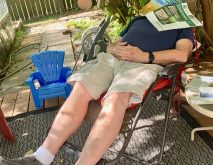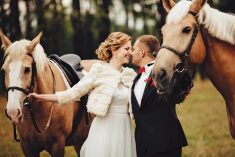A couple we’ll call Max, 86, and Lily, 81, have farmed 480 acres in western Manitoba for the last 60 years. Their eldest son, who we’ll call Sam, now 60, retired from a city job with a solid pension. Sam now farms with his parents. He is the registered co-owner of the home 320 acres and will automatically inherit this land when his parents pass on.
Their daughter, we’ll call her Nancy, 58, has already received $440,000 in cash to buy herself a new home. The parents’ concern now turns to their youngest child who we’ll call Bob, 46. Bob had a major accident and is now living with a disability. He lives apart from Max and Lily and his income is dependent on disability benefits.
Read Also

Gentle treatments for pain in the neck
Heading toward year-end, people unknowingly tense up against the cold and busyness, causing neck pain that can often be treated with appropriate support and gentle mobility, athletic therapist Kathlyn Hossack says.
Max and Lily consulted Don Forbes of Forbes Wealth Management Inc. in Carberry, Man., for advice on how to structure a support plan for Bob that will also treat their other two children fairly.
“The basis for a plan has to be an estate plan and use of the Qualified Farmland Capital Gain Tax Credit and other tax planning routes,” Forbes explains.
The plan’s foundation
The foundation for a plan is the current book value of the farm plus the capital gain exemption, now worth $2.1 million for the couple. Any capital gain over this level would be deferred to the new owners through a purchase price to be determined. The exemption plus capital gains tax deferral will accomplish a tax-free transfer to the children, Forbes explains.
The gain in the value of personally owned farmland will be offset by the $1 million Personally Owned Farmland Capital Gains Tax Exemption for each partner plus the exemption of the couple’s primary residence and one acre worth an estimated $100,000. That’s the $2.1 million exemption.
The transfer price can be any value between book value and today’s market price. This includes not only the land, but also the farm’s equipment and inventory. The concept is to use up all available tax credits and exemptions without claiming the entire market value of the farm and having to pay tax on the date of transfer.
A parallel capital gains calculation will apply to the transfer of the rest of the farm, Forbes explains.
The details
Assuming that three-quarters of the farm has a value of $1,336,900 and a book value of $48,000, the taxable gain will be $1,288,900. There would be an offsetting capital gains tax credit of $1,228,900, assuming land value of $100 per acre.
If the transfer happens before the parents’ deaths, there would be Manitoba tax payable and a resulting clawback of Old Age Security benefits, now $7,384 per person per year. The Alternative Minimum Tax (AMT) would apply before death. The AMT is a carryforward credit, but it does not apply in the year of the taxpayer’s death. There would be no tax on transfer of the farm home and one acre of land. Moreover, any life insurance benefits are tax-free. Funeral expenses could be paid out of money held in Tax-Free Savings Accounts.
Financial security for youngest son
Bob will need financial support after his parents die. Structuring the support is complex. There are several choices including the following:
- Under a federal Registered Disability Savings Plan (RDSP), Bob must contribute up to $1,500 and will receive a matching grant from the federal government of $3,500. All income including income and any capital gains are sheltered inside the RDSP. The maximum lifetime contribution limit is $200,000 per person before age 59. There is a maximum lifetime grant of $70,000 to Bob’s age 49. For low-income applicants, the federal government provides an additional $1,000 per contribution up to a $20,000 lifetime limit. The maximum carryforward for grants is $10,500.
- There are other options. Withdrawals for any reason can start after age 60 and money from the deceased parents can be rolled into the RDSP if the beneficiary, like Bob, is a disabled person.
- The strategy to use, therefore, is to transfer proceeds of the parents’ RRIF now and by instruction in their wills to Bob within the $200,000 contribution limit. Amounts over $200,000 are not eligible for this shelter.
- If Max and Lily make Bob the beneficiary of their RRIFs within their wills, the proceeds of their RRIFs can be transferred directly to a Lifetime Benefit Trust for Bob as sole beneficiary.
- At the parents’ deaths, a Qualifying Trust Annuity must be purchased by the Lifetime Benefit Trust funded with RRIF proceeds. The term of the Qualifying Trust Annuity must be a fixed term equal to 90 years minus Bob’s age.
- In Bob’s case, the trust would be funded with $300,000 to buy a 44-year fixed term Qualifying Trust Annuity which would pay about $900 per month. Income would have to be reported to the Manitoba disability support program.
- An alternative is to create a discretionary trust for Bob with a legacy of $100,000 or less. The trust, called a Henson Trust, gives the beneficiary, Bob in this case, no right to income or other proceeds but leaves payments to Bob in the hands of trustees. Income paid out is counted toward the income limits.
- Max and Lily could create a family trust. It would probably be seen as Bob’s trust and thus the province would probably insist that all trust assets be drained before any provincial disability support benefits are paid to Bob. However, the family trust would be flexible, allow the family to control assets and have discretion to increase support to Bob. In this path, there would be a need to pay out all family trust assets while deferring other benefits.
The goal should be to maximize Bob’s RDSP contribution limits, set up a Henson Trust with $100,000, make Bob the beneficiary of RRIFs for the purpose of funding a lifetime benefit trust with Bob the sole beneficiary.
After transfers to Sam and Nancy, $800,000 of cash and other assets will be left over plus 160 acres of farmland. If divided equally between Sam and Nancy, then Bob will be disqualified from all future provincial disability programs until his legacy is used up.
If land or other assets are transferred to Sam and Nancy, the parents should take back a zero-interest promissory note payable on demand so that a marital breakup would not allow a spouse of either child to demand a partition of marital property, that is, the farmland in question.
If the parents decide to liquidate farmland, they can use Tax-Free Savings Accounts with a $75,500, 2021 limit, plus $6,000 per year for subsequent years.
With all of these steps taken, parents Max and Lily can count on two Old Age Security payments of $614 per person per month in 2021, annually increased with inflation, two Canada Pension Plan benefits totalling $1,136 per month, one work pension of $700 per month, Registered Retirement Income Fund payments of $2,116 total per month, land rent of $1,274 per month, and investment income of an estimated $960 per month.
That is a total of $7,414 for the couple or $3,707 each after sharing of eligible income. If taxes are $1,400 per month, the parents would have $6,014 per month to spend, Forbes estimates.
Their house would be free of debt and only property tax, utilities, upkeep of the yard and building to be paid. Their children would be financially secure and Bob’s interests looked after in financial terms for his life.















